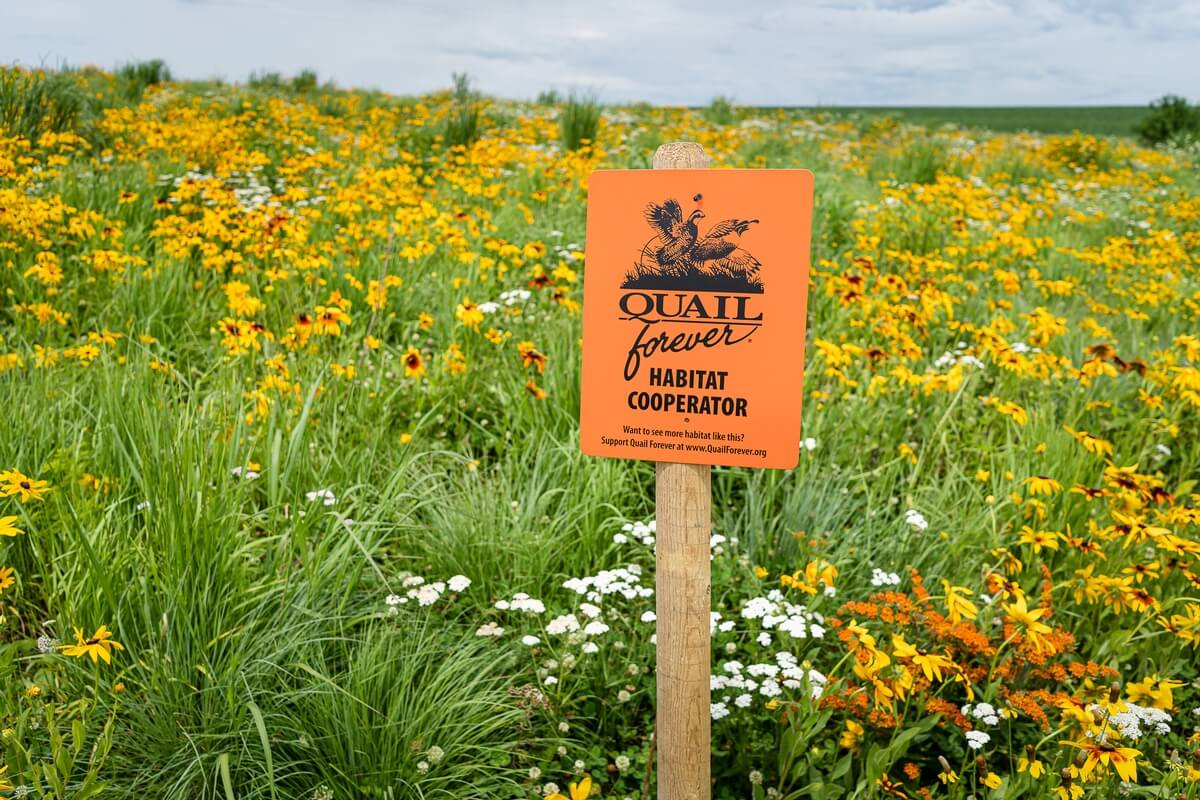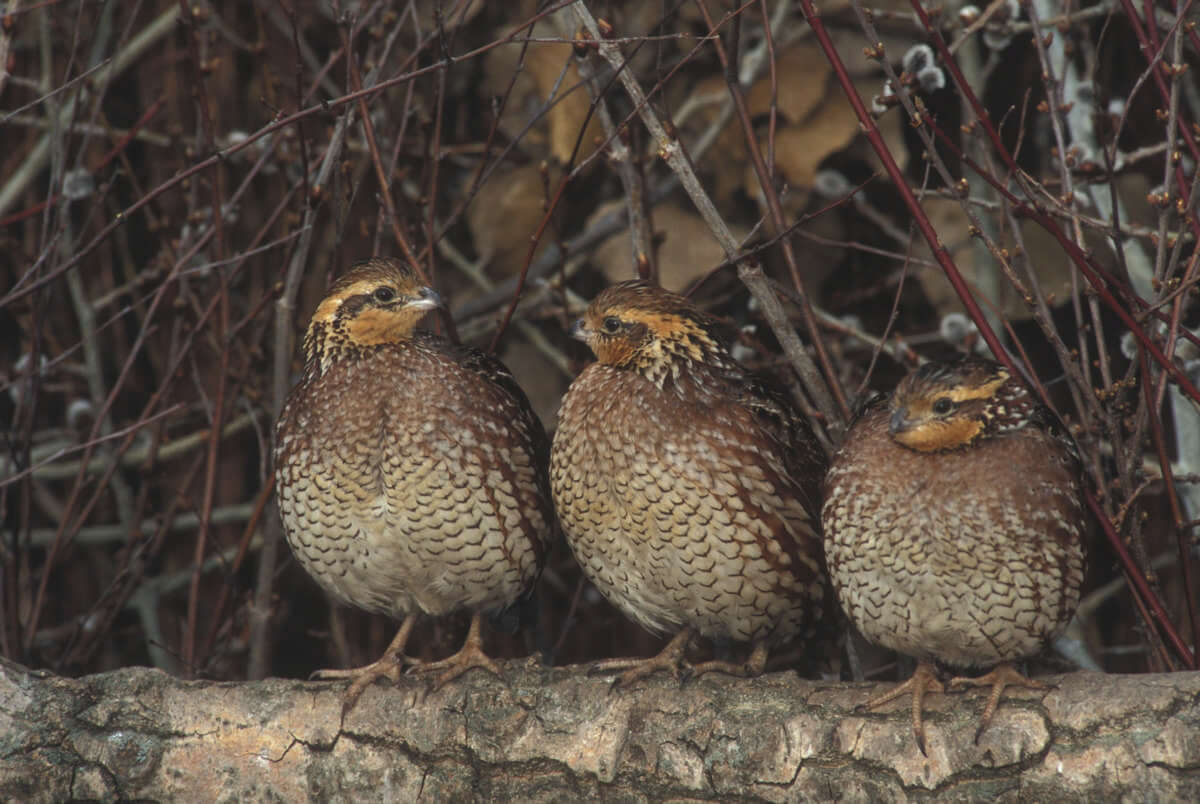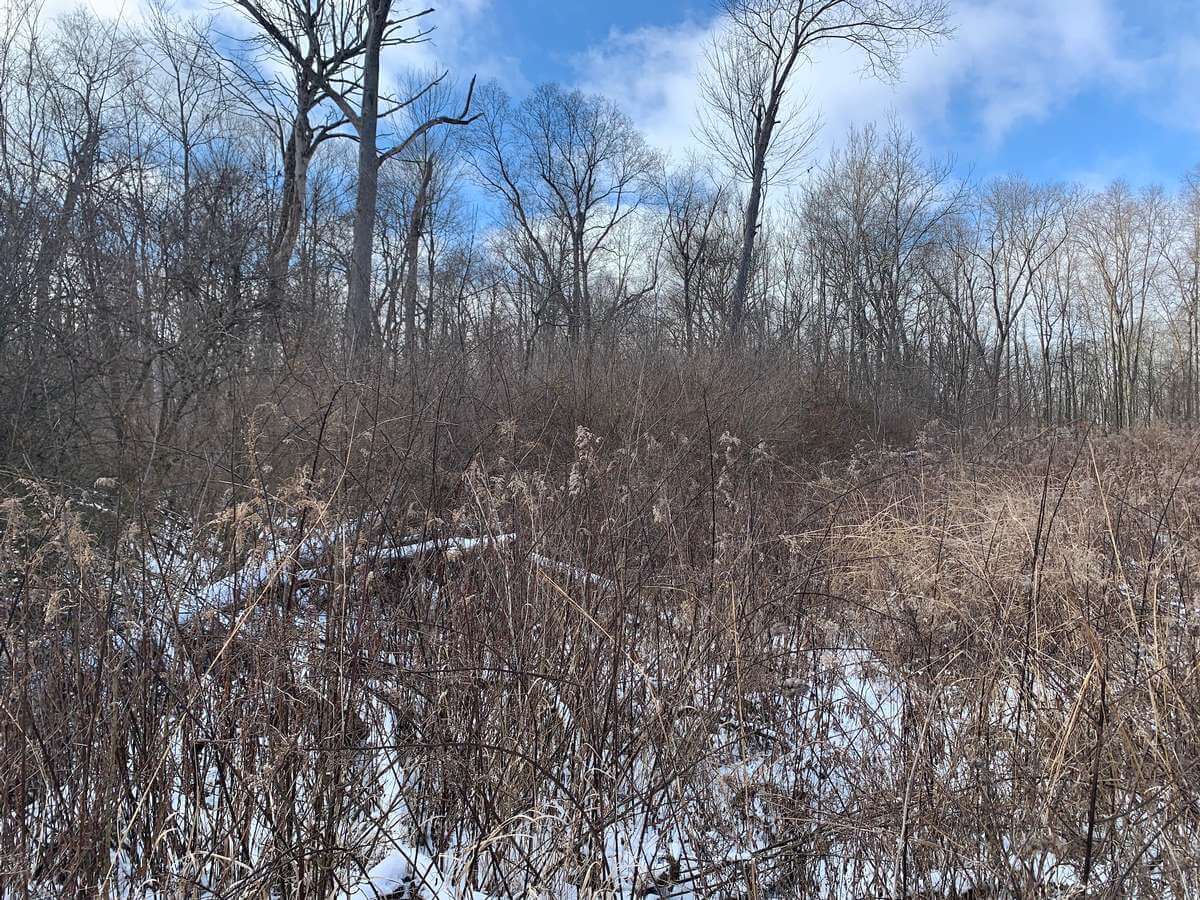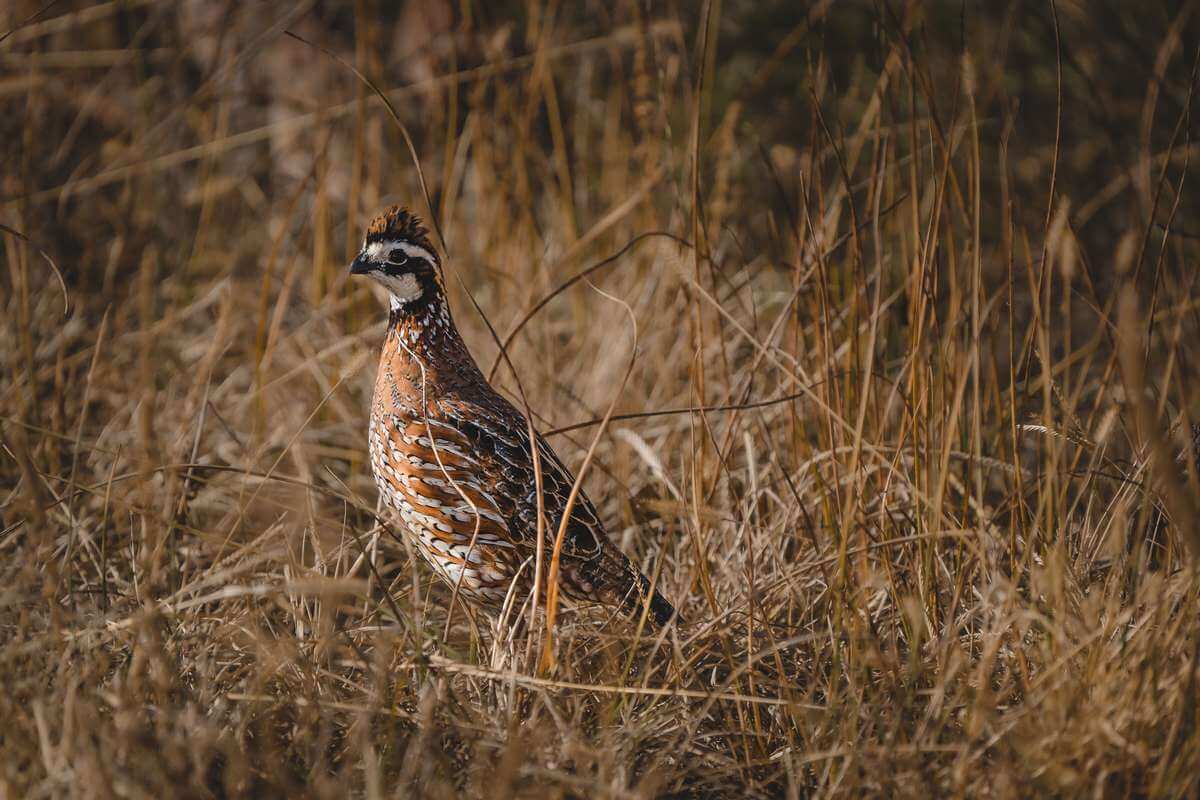Managing for Bobwhite Quail in southeast Minnesota

Pheasants Forever and Quail Forever photo
By TJ Boettcher, Farm Bill Biologist, Houston County
The Northern Bobwhite Quail (Colinus virginianus) is one of the lesser-known upland game birds of Minnesota behind ruffed grouse, pheasant, and turkey, but it wasn’t always this way. It is believed that quail are not native to Minnesota, rather, it is likely that they moved north with settlers as they started clearing the land and forests for agriculture.
The first quail likely reached the state around 1850 with the first regulated hunting season occurring in 1858. The first recorded harvest estimate in 1919 came in at 6,100 birds and reached its peak in 1927 at 13,000 birds. After this, a rapid decline in population prompted a hunting season only in southeastern Minnesota that ended in 1958 with a 16-day season that saw the harvest of 3,200 birds. Today, a few bobwhites can still be found in small pockets throughout southeastern Minnesota, however, sightings have become increasingly uncommon.
Named for its distinctive whistle that literally sounds like “bob-WHITE”, this little bird is most commonly found in the southeastern United states with a range extending as far south as Mexico to has far north as central Wisconsin and as far west as Colorado. They are non-migratory, often remaining in the same 15 to 50-acre home range their entire life. As highly social birds, bobwhites often form groups, or coveys, of up to 20 individuals.
This strength in numbers allows them to keep an eye out for predators such as birds of prey, coyotes, foxes, and snakes. At night, bobwhite quail coveys roost in a circle on the ground with their tails facing in. This probably helps to conserve heat while allowing the covey to maintain a 360-degree view of its surroundings. Females nest on the ground and lay a clutch of 7 to 28 eggs in the spring. After a 22-to-24-day incubation period, chicks hatch and can begin foraging for food shortly after. A chick’s diet consists primarily of insects until they are 6 to 8 weeks old at which time they begin feeding mostly on seeds.

Pheasants Forever and Quail Forever photo
Bobwhites have experienced widespread declines in their populations across the United States with an estimated 81% drop in their total population since 1966. There are likely multiple factors contributing to this decline. For one, land use has changed significantly since the 1960’s. The fields and forests that used to be kept more open by grazing and prescribed burns have long since become overgrown by invasive trees and shrubs. An additional shift from small grains to row crops has not been favorable for quail either.
Additionally, fence rows that used to supply the brushy cover that quail rely on have been removed in favor of creating larger fields. Invasive species like buckthorn, honeysuckle, multiflora rose, and barberry are becoming more widespread and are outcompeting the more beneficial dogwoods, plums, and oaks that the quail rely on for food. Finally, technological advances in insecticides and herbicides have reduced the attractiveness of row crops such as corn and soybeans for quail who benefit from weedier fields.
So how can we improve quail populations in Minnesota? The first step is generating an interest among landowners. Since most of the land in southeastern Minnesota is private, if quail are going to make a comeback, it is going to take the effort of many individuals treating their entire property as a garden; this means “weeding” non-native species from old fields and woodlands and thinning of the right trees to regain the open canopy that quail need. The second step is finding the time and energy to do all this. People need to work for a living, and spending a lot of time on acreage that will have little monetary return in investment can be hard for people. However, if interest and time are available, the rest can be fairly easy.

Pheasants Forever and Quail Forever photo
Most landowners have the equipment on hand to make substantial differences in habitat. As some land managers say, “a chainsaw is a deer’s best friend”, the same could be said for bobwhite quail. Identifying degraded brushland, oak savanna, or oak woodland, and removing trees such as elm, hackberry, or boxelder that have been allowed to grow up in the absence of grazing or fire since the 1960’s, can easily be cut and left to lay providing increased canopy openness and immediate cover for wildlife. That chainsaw can also be put to good use cutting buckthorn and honeysuckle and then following up with a 50/50 mixture of 41% glyphosate sprayed on the stump to kill it.
By going through an old field or forest in the manner, and “weeding” out the undesirable plants, one can soon leave it as much better habitat for quail and other wildlife than it was before. You could go also go a step further. If, after you remove all the invasive shrubs and other undesirable trees, you are left with nothing but open ground, you might consider planting some shrubs like wild plum and dogwoods to provide cover in the future for your quail. These shrubs can be ordered from many nurseries in the area or ordered from the Minnesota DNR or your local Soil and Water Conservation district.
If interest and time is there, but money is an issue, there are multiple programs available that can help improve habitat and provide landowners with cost share and rental payments. One of the best known is the Conservation Reserve Program, or CRP. This program is administered by the Farm Service Agency (FSA), with technical guidance provided by the Natural Resources Conservation Service (NRCS). Through this program, producers can enroll eligible acres of their crop fields in return for annual rental payments that are typically slightly below the normal soil rental rate. So, how does this help quail? Well, there are multiple different “practices” that can be utilized.
Practices can be thought of as different types of cover from trees to prairie grasses. They are referred to as a “Conservation Practice” (CP) followed by a number. For example, CP1 means conservation practice one which is “Introduced Grasses and Legumes.” This is the cheapest and most basic of practices and must include a seed mix of 3 nonnative grasses and a nonnative forb. This practice is among the most common in southeastern Minnesota, but it also provides the least benefits for wildlife compared to other CRP practices.

Edge feathering and a mix of cover are ideal for quail
The most beneficial practices for quail and other wildlife provide a diversity of cover. Having many different species of plants and plant types such as grasses, flowers, and shrubs provides forage for birds as well as the insects that chicks feed on. To achieve this, practices such as CP33 “Habitat Buffers for Upland Birds” or CP4D “Wildlife Habitat” can supply the maximum diversity allowed by CRP. These two practices offer a seed mix of native warm season bunch grasses and wildflowers as the base ground cover. What’s great about these practices is that they also can include a shrub component of up to 10% of the field.
Picture this in your head: It’s been 3 or 4 years since you enrolled this field in CRP. You’re walking through grass as tall as you. You walk up on a clump of wild plum trees that you planted in the middle of the field, several pheasants flush. Upon closer inspection, you see that songbirds have built nests within the confines of the thick branches. You walk up to another clump of dogwoods that you planted. This time a covey of quail gets up and flies across your field and lands near another clump of nannyberry that you planted.
There are also several other beneficial practices including CP25 “Rare and Declining Habitat”, and SAFE grass CP38E-25 “Minnesota Back Forty Pheasant.” These practices are also great options for providing native grassy cover for wildlife, but do not include the shrub component. CP16A “Shelterbelts” and CP3/3A “Tree Planting” also can provide excellent cover for wildlife.
Another useful program that the NRCS offers is the Environmental Quality Incentives Program. This program provides cost share for projects occurring on working lands which can include anything from farmsteads to forests. Unlike CRP, it does not provide annual rental payments. Rather, it provides cost share for things like supplies and labor to conduct a project.

Pheasants Forever and Quail Forever photo
Popular practices in the area include brush management for non-native plants like buckthorn, honeysuckle, or multiflora rose. However, the sky is the limit. Through EQIP, you could get funding for making brush piles, edge feathering, bat houses, prairie plantings, timber stand improvement, and more. If there’s a project that you want to do, it could probably fall under the EQIP umbrella.
Bobwhite quail are a unique part of Minnesota heritage, but they take active land management in order to thrive. If you would like technical assistance with habitat management on property, feel free to contact your local NRCS office at any time. They will provide you with direction and resources to tackle any of your projects.
TJ Boettcher works as a Farm Bill Biologist in Caledonia, MN. He enjoys cutting wood, taking his dog hunting, and corn hole. If you have any habitat or plant related questions, you can give TJ a call at 507-724-5261 Ext 112 or email him at tboettcher@pheasantsforever.org.

